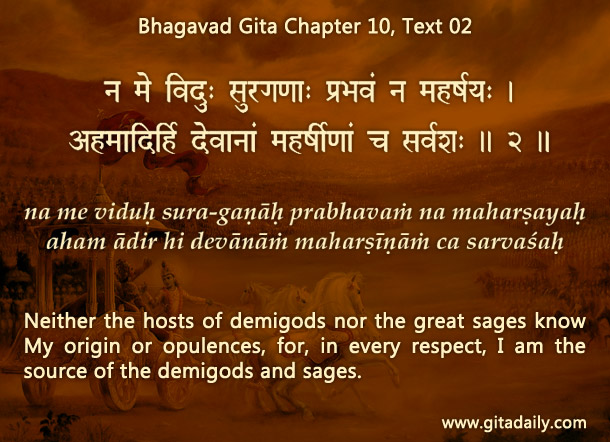Conventional Western thought divided the world’s religions into polytheistic and monotheistic. The monotheistic religions such as Judaism, Christianity and Islam viewed derisively the polytheistic religions that preceded them in the Greco-Roman civilization. And when these monotheisms encounter the Vedic tradition of ancient India, they often labeled the tradition as a primitive polytheism, akin to its Greco-Roman counterparts.
But a careful study of the bhakti tradition, which is the ripened fruit of Vedic wisdom, reveals a far more subtle and sophisticated understanding of God. Firstly, the bhakti tradition is monotheistic – the honorifics it uses to describe the object of devotion are strikingly similar to those used to describe God in the Abrahamic monotheisms. Ontologically, the many gods are not the Supreme’s competitors; they are his assistants. Indeed, the Supreme is so sublime and transcendental that the other gods can’t even know him, as the Bhagavad-gita (10.02) asserts.
Secondly, this one supreme manifests in multiple ways in multiple forms for reciprocating love with devotees and for establishing dharma. This multiplicity of divine manifestations can be conveyed by the term ‘polymorphic monotheism.’
Thirdly, the bhakti tradition rejects any male monopoly over conceptions of the divine. Such a monopoly defines the Abrahamic monotheisms – they singularly characterize God as male. The bhakti tradition reveals God to be a divine couple, with both partners simultaneously partaking of the same divine nature. Additionally, they relish pure spiritual intimacy within the divine, thereby demonstrating the pristine original of which the male-female polarity of this world is a reflection. Aptly, the bhakti tradition worships divine couples: Sita-Rama, Lakshmi-Narayana and Radha-Krishna. The theology underlying such worship can be represented by the term ‘bi-monotheism.’
Thus, the bhakti theology goes far beyond the stereotypes of polytheism and monotheism to reveal a profound vision of the divine that can be called polymorphic bi-monotheism.
To know more about this verse, please click on the image
Podcast:


Leave A Comment